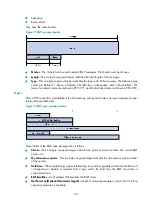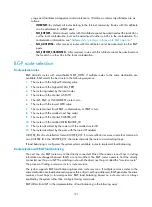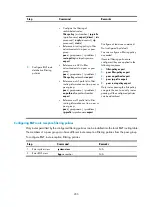
195
Route reflector
IBGP peers must be fully meshed to maintain connectivity. If n routers exist in an AS, the number of IBGP
connections is n (n-1)/2, and large amounts of network and CPU resources are consumed.
Using route reflectors can resolve this issue. In an AS, a router acts as a route reflector, and other routers
act as clients connecting to the route reflector. The route reflector forwards routing information between
clients, so BGP sessions between clients need not be established.
A router that is neither a route reflector nor a client is a non-client, which, as shown in
, must
establish BGP sessions to the route reflector and other non-clients.
Figure 83
Network diagram for a route reflector
The route reflector and clients form a cluster. In some cases, you can configure more than one route
reflector in a cluster to improve network reliability and prevent a single point of failure, as shown in the
following figure. The configured route reflectors must have the same Cluster_ID in order to avoid routing
loops.
Figure 84
Network diagram for route reflectors
When the BGP routers in an AS are fully meshed, route reflection is unnecessary because it consumes
more bandwidth resources. You can use related commands to disable route reflection.
















































